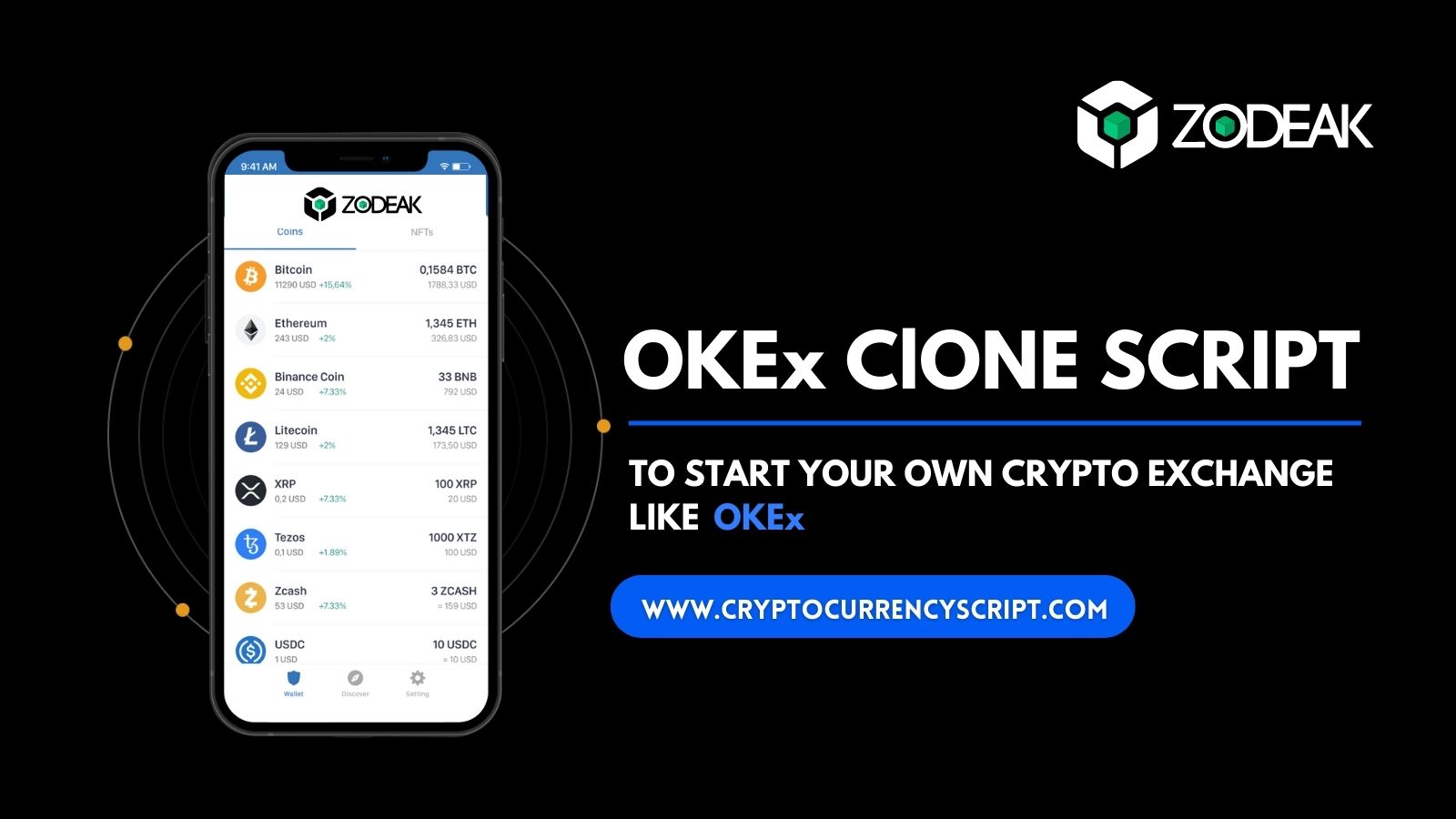If you are an aspiring entrepreneur harboring to be part of the crypto space by starting a cryptocurrency exchange business, then this blog is for you. Keep reading!
According to the statistics of 2023, there are 420 million traders worldwide. The number of newcomers is still increasing despite the fluctuation in the price of cryptocurrencies. Also, many crypto investors flock to crypto exchanges to trade their digital currencies and make money.
In return, cryptocurrency exchanges should provide their platform users with a seamless trading experience, preferred payment options, quick transactions, necessary trading features, and a high level of security for users’ data and their money.
These crypto exchanges can provide international investors and traders with a specific set of cryptocurrencies. With so many cryptocurrency exchange platforms accessible to users worldwide, it is essential to comprehend how these trading businesses operate if you want to leap into the crypto community!
So, What precisely the cryptocurrency exchange business is? What types are there? What are the steps required to start a cryptocurrency exchange platform?
This inclusive guide explains how to start a crypto exchange platform business and guarantees to cover everything related to it. We will lay out here in this blog all the crucial steps that you as the future crypto exchange must take.
What is a Cryptocurrency Exchange Business?
Cryptocurrency exchange business is a platform that offers a variety of services to facilitate the trading, buying, and selling of cryptocurrencies. These services can vary depending on the platform but generally include fiat-to-crypto trading, wallet, staking, customer support, and more.
Generally, the cryptocurrency exchange allows users to convert one crypto for another or crypto into fiat currencies. It facilitates transactions by matching and executing buying and selling orders for users at specified prices. Experienced traders can also be provided with additional features such as wallet services for storing cryptocurrencies and advanced trading tools.
Cryptocurrency exchange business plays an important role in funding the crypto ecosystem and provides a way for individuals to access and participate in the digital asset market. They usually charge fees for their services, such as transaction fees or withdrawals of cash, to finance operating expenses and generate income.
Now let’s look at the cryptocurrency exchange types separately in the following discussion.
Types of Cryptocurrency Exchange Platforms
Designing a futures trading marketplace with your target audience in mind is a smart business move. But, how to build a platform for cryptocurrency exchange? Let’s first look at the different categories one by one.
There are various platforms for trading cryptocurrencies, but the most popular are centralized, decentralized, P2P, and hybrid exchanges. These categories are listed below with descriptions.
Centralized Exchange
Centralized Exchange (CEX) is the most popular method to buy and sell cryptocurrency, where the admin oversees the entire operation. Users of this trading platform can buy, hold, sell, and trade both fiat and cryptos.
Users of CEXs must put their trust in a third party, which is one of their distinguishing characteristics. Simply put, this type of exchange functions similarly to a bank, in that the third-party organization will authenticate every transaction.
High-speed transactions, high liquidity, competitive market rates, preferred payment options, quick transactions, necessary trading features, trading pairs, and other benefits can all be found on a centralized exchange.
Examples: Binance, Coinbase, Kraken, and KuCoin
Decentralized Exchange
Decentralized Exchange (DEX) is a trading platform that uses smart contracts and blockchain technology for transactions and maintaining records. Unlike CEX, it does not depend on any third party to conduct transactions.
Also, users using this type of exchange are not required to submit any proof to complete Know Your Customer (KYC) verification, ensuring the highest level of anonymity.
Besides, users have total control over their funds because their cryptos are kept in private wallets and protected by the private keys they hold.
Examples: Uniswap, DyDx, PancakeSwap, and KyberSwap
Hybrid Exchange
A hybrid exchange is a platform that combines centralized and decentralized exchanges with their potential features. It combines the usability and liquidity of centralized exchange with the anonymity and security of a decentralized exchange. Users can trade digital assets without the assistance of outside parties on this platform.
Examples: TRON Joyso, Nash, Qurrex, and Legolas
P2P Exchange
A crypto P2P exchange platform allows buyers and sellers to meet online and exchange crypto. This admin-based system is integrated with an escrow service to ensure a secure trading process. When sellers place their bids using ads, buyers who match the criteria can accept the offer and trade using escrow.
Examples: LocalBitcoins, Gemini, OKX, and Paxful
These are the main types of crypto exchange you can choose to create your crypto trading business. Hope you understand the categories we have discussed above. Now, it’s time to create your trading business.
Keep reading this blog to know how to create your platform step by step…
Steps to Build a Cryptocurrency Exchange Platform
Step 1: Choosing Exchange Platform Type
Selecting the type of cryptocurrency exchange is the first and foremost crucial step you should make before building your marketplace for cryptocurrency exchange. You’ll be able to choose later on regarding crypto exchange software, storage options, licensing concerns, liquidity management, the ability to trade with fiat currencies, and other things.
Centralized (CEX), decentralized (DEX), hybrid and P2P exchange are the four different categories of cryptocurrency exchange platforms you need to choose for your business.
Step 2: Choose the Regulation
The second most important step is you must carefully research all the legal aspects related to the licensing of running a crypto exchange to select a regulation. In addition to conducting exchange operations, you need a license to work with banks and multiple payment systems.
Even though cryptocurrencies are becoming more and more popular, some nations forbid cryptocurrency transactions. Of course, you should avoid these countries and think about locations (Brazil, the USA, India, Switzerland, Singapore, El Salvador, Germany, Canada, Estonia, and more) with favorable cryptocurrency regulations.
Step 3: Basic Components of Crypto Exchange
At this point, you need to specify the architecture of your crypto exchange. The technical structures of your trading platforms can vary slightly. The basic component that you need to have in your architecture is outlined below:
Matching Engine
The matching engine combines buyers’ and sellers’ opposing orders. Simply, this is the central component of your exchange, which is in charge of registering orders, matching them, and carrying out transactions of traders.
Wallets
Users can store and transfer cryptocurrencies using their built-in wallet or a separate wallet of their choice. Both wallets support multiple cryptocurrencies and use for multiple functions like holding private keys, staking cryptos, etc.
Also, it must include fiat gateways for dealing with conventional currencies and a security system to ensure the security of user funds.
Admin Panel
The admin panel oversees the entire system, including trading, deposit, and transactions. This tool can also be used to customize the website, resolve queries, add sub-admins, and add any new features that might be required as your company expands.
User Interface
The user interface allows traders to register, view the order book, run transactions, statistics, deposits, balances, and more. It can be simple or complex but it should have several indicators, trading tools, charts, and other essential features.
Also, your exchange service should be user-friendly and adaptable for any device, including desktops and other handheld devices, whether it is designed for novice or experienced traders. Besides, focus more on the UI/UX design of your trading platform.
Note: The layout of your crypto exchange should make a significant impact on the user experience and, as a result, users continue to trade on your exchange platform.
User Panel
The user panel allows users can open an account, deposit funds, add a wallet, withdraw money, and access analytics and reporting tools.
Therefore, make a list of other on-demand features and integrations you need to add to the platform during the development of the solution.
Step 4: Select the Developing Method
You have two options here: Develop the crypto marketplace from scratch or buy a cryptocurrency exchange script. To help you choose wisely, we’ll explain both possibilities.
Option 1: Develop the Platform From Scratch
If you decide to go with this option, make sure your team is well-versed in development and that you are well-prepared for the process. Make a note that this process could take at least several months to a year and necessitate significant financial outlay.
Also, your project will require an audit for safety and legal compliance. If you lack experience in this area, it is preferable to work with developers from a cryptocurrency exchange development Company who can assist you in creating a platform that satisfies all your needs and preferences.
Note: This method makes your crypto exchange unique among your competitors because it is built from scratch. Also, you can implement your own idea while creating it.
Option 2: Buying a Cryptocurrency Exchange Script
This option will allow you to save time, effort, and money. And you can start your business much earlier than choosing option 1. If you want to avoid technical and business headaches, option 2 is the best option to start your business.
Cryptocurrency Exchange Script is a pre-built software that includes all the necessary features from basic to more intricate, which helps you launch the site quickly. Numerous customization options are available with this solution, enabling you to modify the software to meet the unique needs of your company.
With the aid of a cryptocurrency exchange development company, you can obtain a highly functional exchange solution connected to your desired database/blockchain. Technical features like a trading engine, effective admin panel, user dashboard, etc. are also included.
Note: With this method, you can quickly launch your cryptocurrency exchange before your rivals by customizing the script according to your business needs.
Step 5: Organize Funds
If you choose to develop your cryptocurrency exchange from scratch, you will need to raise funds to hire a qualified team of developers, testers, marketers, content creators, associates, and other specialists. According to estimates, it could cost up to $50,000.
Initially, cryptocurrency exchange software Development cost starts from $4000 and varies based on the features, integrations, and plug-ins based on your business needs. Therefore, plan and estimate your budget for setting up and running the cryptocurrency exchange.
Step 6: Finding a Liquidity Provider
Your exchange business’s competitiveness and success will be heavily reliant on liquidity. All you need to do is find a trustworthy liquidity provider with a sizable network of active exchanges in the market.
Step 7: Connect a Payment Processor
Your platform users will be able to make transactions and deposit/withdraw digital funds using an integrated payment processor. Therefore, you need to investigate what it offers thoroughly to select the best provider (performance, transaction speed, security, availability, listing of cryptocurrencies).
Analyze how many businesses are currently utilizing this payment system. And don’t forget to thoroughly research the market prices, conditions, and feedback before deciding on it.
Step 8: Provide Security Measures
Crypto exchanges need to constantly be on the ball and use a variety of techniques to increase the security of their funds. You should invest as much time and resources as possible in taking the necessary precautions to maintain the required level of security.
Security elements like Two-factor authentication, KYC verification, database encryption, anti-phishing, and other cutting-edge technologies are to be included.
Step 9: Test Your Solution
Another crucial phase in the development of your solution is testing, which under no circumstances should be disregarded. You should ensure the platform is functioning properly.
For instance, you can perform the testing procedures such as Testing for vulnerabilities, KYC verification, deposits, and withdrawals, buying and selling cryptocurrency, registration processes, testing of APIs and plug-ins, etc.
Note: To guarantee flawless performance and improve the user experience, never forget to gather user feedback and make the necessary adjustments.
Step 10: Deploy Crypto Exchange
If the testing process is complete and everything is in order, your exchange platform is deployed to enter the market and start your promotional campaign to welcome traders.
Keep up with current trends to quickly add new features and give users top-notch tools to trade efficiently. Besides, it is mandatory that you maintain, update, and promote the platform on an ongoing basis.
Hope you got some insight, use the above step to start your crypto exchange business. Let me end up this blog with a few words.
Final words
As of now, there are 21,910 cryptocurrencies (with a total market capitalization of $850 billion) with 20 million crypto users worldwide, and the number is still growing, as reported by Forbes.
Meanwhile, with the growing crypto and its users, many crypto-based startups also appear in the market. They work hard to create the best crypto products that adhere to the most recent standards.
If you’re the one among them who works hard to be part of the world of cryptocurrencies! Then starting a cryptocurrency exchange development is the best business option!





